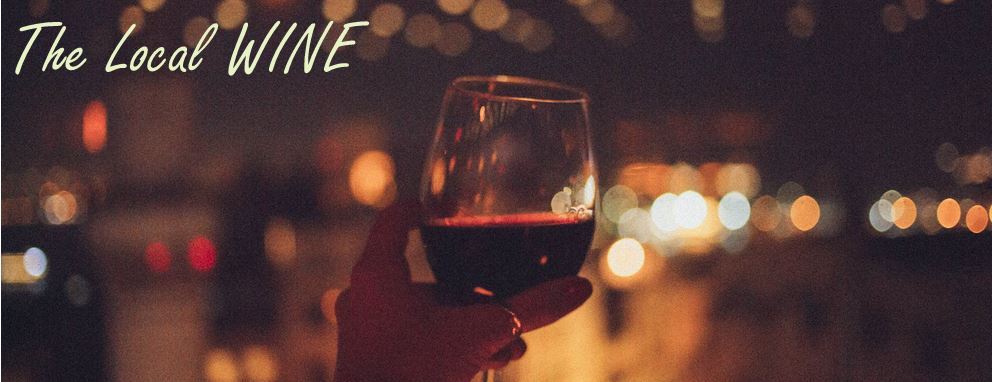November 26th, 2023Wine notes …
with Clive Hartley
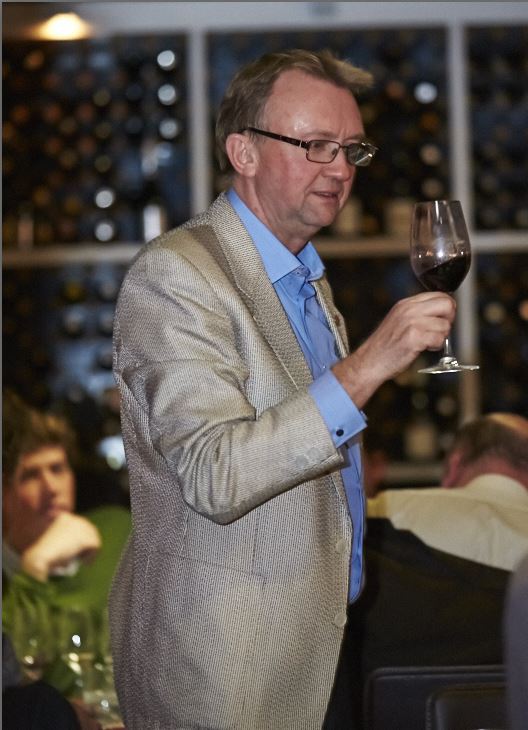
Glenhope Vineyard is both an old and new vineyard. It was planted in 1995 by Tom Lazar from Virgin Hills, so it is coming up to 30 years old and in its prime.
It is the largest vineyard in the region, with 94 acres under vine, but probably you haven’t heard of it – it has had owners from outside the region for most of its life.
But in recent times it has finally fallen into the hands of people who care about the land and vines. Firstly, the vigneron Scott Harrington who has been caring for the vines since 2018. Secondly, the land has new custodians, Melbourne entrepreneurs James and Marlin Gevergizian bought the property in 2021.
The vineyard is on a number of different soils including decomposed granite and sandy, iron-rich loams. It is located in the Baynton area on the Burke and Wills Track, heading towards the Heathcote region in the slightly warmer northern part of the Macedon Ranges. These factors allow the vineyard to grow a range of grape varieties including reds such as cabernet sauvignon, cabernet franc, merlot, malbec and shiraz as well as the traditional chardonnay, riesling and pinot noir you would expect.
With such a large vineyard most of their grape production is sold to other local winemakers including the likes of Matt Harrop, Owen Latta and Michael Dhillon. But for the first time they have released a collection of wines made by Scott, and they have had instant success in being awarded the trophy for the Best Red Variety (other than pinot) and the Best Winery at the recent Macedon Ranges Wine Exhibition.
The winner was the Glenhope Vineyard Granitic Shiraz 2022. It’s a cool climate example displaying raspberry, nutmeg and a host of cake spice aromas. Some cool climate white pepper also develops with hints of graphite. On the palate there is a bag of sweet, black, brambly stewed fruits, with hints of spice to accompany the dry, powdery, tannic finish. Scott only uses old oak, he wants the fruit to do the talking.
Other recommended wines out of their range include a smooth, plummy merlot, a floral cabernet franc (which received a gold medal at the show), a cabernet sauvignon, merlot, shiraz blend, and a wine for summer, the 2022 rosé. This old vineyard is one to watch with wines available soon through their website.
Clive Hartley is an award-winning wine writer, educator and consultant. Want to learn more about wine? Try his Australian Wine Guide (7th ed) now available for purchase from Paradise Books, Daylesford, Stoneman’s Bookroom, Castlemaine or via his website – www.australianwineguide.com.au
November 12th, 2023Wine notes with Clive Hartley
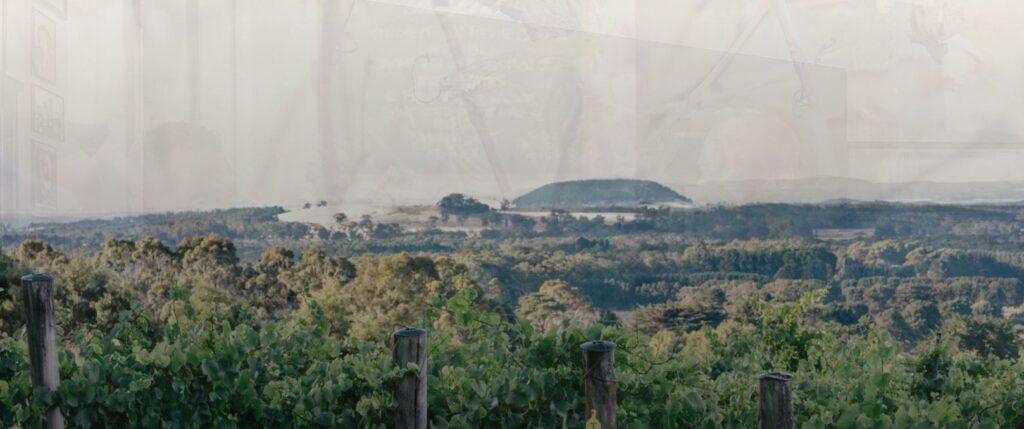
Hard work pays off
Since planting grapevines on an old potato farm in 1998, Passing Clouds has become a stalwart producer in the Macedon Ranges. At Musk, the vineyard is a lofty 742 metres above sea level on the edge of the Great Dividing Range, which is one of the most exposed and coldest vineyard sites in Australia. Not the kindest weather conditions for some, but perfect for making elegant pinot noir and chardonnay. So it was no surprise in it picking up the MCC Labels Trophy at the recent 2023 Macedon Ranges Wine Exhibition, as well as the Best Wine of Exhibition Award for its 2022 Estate Chardonnay. This is a great result given the stiff competition from the likes of Curly Flat. “It was nice to receive this for our chardonnay as last year it was the turn of our pinot noir to pick up a trophy,” said winemaker and owner Cameron Leith. Cameron puts some of his success down to the hard work done establishing a regenerative approach in the vineyard. “We started work in 2016 which involved improving the soils and our relationships with the land. It is a different approach than conventional viticulture and one which benefits both the soil and our planet.”
Since starting, he has seen a rise in the quality of his fruit coming off the vineyard as well as reducing the input costs, “purity of place has improved and now the wines remind me more of Europe”. As part of their approach, they planted over 700 native shrubs and grasses in different insectariums that encourage more diversity in insect life. This, for example, has helped curb the snail population which can cause havoc once in the vine canopy. They also have higher than normal organic material in the soil thanks to using natural fertilisers from their sheep and composting their winery and kitchen waste.
The trophy-winning Estate Chardonnay is an elegant, restrained wine with citrus and minerally, slightly saline, driven aromas, accompanied by some oak-derived struck-match complexity. The palate is where you see the cool climate shine brightly with fresh acid-driven citrus and stone fruit flavours yet laced with a savoury oak middle palate on a medium-bodied framework. This wine is delicious to drink now and will age well into the future.

Clive Hartley is an award-winning wine writer, educator and consultant. Want to learn more about wine? Try his Australian Wine Guide (7th ed) from Paradise Books, Daylesford, Stoneman’s Bookroom, Castlemaine or via his website – www.australianwineguide.com.au
October 28th, 2023Wine notes …
with Clive Hartley
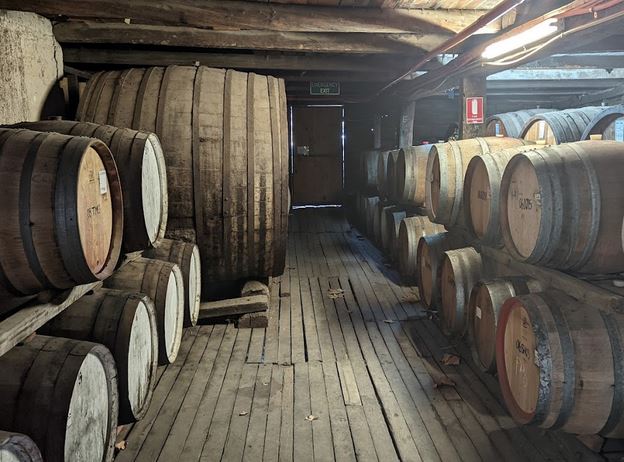
Field Blends
In the tiny Great Western sub-region of the Grampians, Best’s have their Nursery
Block within the Concongella vineyard which has grape vines first planted in 1866.
They have 39 different grape varieties planted in the tiny 1.2-hectare plot, with eight
varieties still unidentified. Some of the rarer red grape varieties include the obscure
and nearly extinct gueuche noir as well as fer and aubun. All three originated in
France. Whites include the likes of furmint from Hungary, dourado from Portugal
and troven from France. With so many grape varieties, Best’s make two wines from
the Nursery Block, an excellent field blend of the whites and one from the reds.
Field blends have gained more attention in recent years, and I like them. As the
old saying goes ‘the whole is greater than the sum of its parts’ and field blends seem
to make more interesting wines than single grape varieties. Often the white wines
are a blend of the more aromatic grape varieties. I like the expressive aromatics and
texture that these blends create. Australian examples have often been inspired by the
traditional gentil and edelzwicker wines from Alsace that blend together riesling,
muscat, pinot gris, and gewurztraminer. If you want to try a top field blend from
Alsace look no further than the wines of producer Jean-Michel Deiss.
Returning closer to home, Hanging Rock Winery in the Macedon Ranges does
a delicious field blend of riesling, gewurztraminer and pinot gris from its Jim Jim
vineyard, aptly named Jim Jim Three. Another cracking example is by Tasmanian
winemaker Samantha Connew with her Stargazer wines. She makes a complex, wild
fermented wine from pinot gris, pinot blanc, riesling and gewurztraminer called
Tupelo which is named after the honey produced from the Tupelo black gum tree.
Riesling and pinot gris/grigio are well-known white grapes. However, gewurztraminer is a bit unloved by Australians. It can be very pungent, lack acidity, has high alcohol and a phenolic mouthfeel which I guess might not be attractive to some people. It’s a maverick sort of wine, a loner, on its own, but partnered with riesling and co. it seems to settle down and plays an important part in the blend. If
you want to explore gewurztraminer on its own, Delatite winery in Mansfield does a
plethora of wines involving the grape including a gewurztraminer schnapps.

Clive Hartley is an award-winning wine writer, educator and consultant. His Australian Wine
Guide (7th ed) is at Paradise Books in Daylesford or visit www.australianwineguide.com.au
October 16th, 2023Wine notes
with Clive Hartley
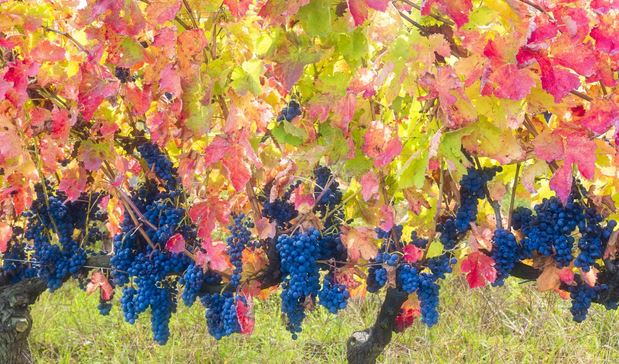
Party wine
Aglianico and I go back a long way. In my 20s I was asked to ‘bring a bottle’ to parties and this was my ‘go-to’ wine. I took a double magnum. Well, no one said it couldn’t be a big bottle. I still remember the wine, it was D’Angelo Aglianico del Vulture from Basilicata in Southern Italy.
Aglianico is a red grape grown in southern Italy. Del Vulture is a region perched on the side of an extinct volcano (Mount Vulture) in a remote part of Basilicata.
However, aglianico’s most famous region of production is in Campania, in an area called Taurasi. There are similar growing conditions to del Vulture as the soils are volcanic and it is highish in altitude. The grape has some similarities to nebbiolo due to its tannic profile and is known as the thinking person’s Barolo. The 2015 Terredora Fatica Contadina Taurasi is a lovely example. Rich, full-bodied but smooth and well balanced. No fruit here, all earth, mushrooms, leather and black olives. It is in the traditional camp and couldn’t be mistaken for anything other than an ‘old world’ wine. Generally, the wines are built to age with lashings of tannin and natural acidity.
Some other trusted producers of aglianico in Italy are Elena Fucci (Basilicata) Feudi di San Gregorio, Cantine Antonio Caggiano or Mastroberardino all from Campania.
There are suspicions of the grape coming from Greece, a common assumption with southern Italian grapes. However, DNA testing puts it as originating in Spain.
Chalmers were the first to introduce it into Australia in 2001. Chalmers keep their style in the Italian fashion with maturation in a chestnut botte (an Italian term for a large barrel). It seems to go well in the Heathcote region and Chalmers have four different clones planted which they sell to other vineyards. Another recommended aglianico comes from After Five Co from the Barossa Valley. My notes on their 2018 sounds like a new world version of the grape: “Fruitcake, raisins, vibrant black fruits, cola and licorice aromas – dry, full bodied with dry mouth puckering tannins.”
Sutton Grange in Bendigo make a good example and claim to have some of the oldest vines in Australia grown on granite soils. Staying in Victoria, Fighting Gully Road have a good reputation for their aglianico which is sourced from vines grown in the Alpine Valley. Take it to a party and enjoy.

Clive Hartley is an award-winning wine writer, educator and consultant. Want to learn more about wine? Try his Australian Wine Guide (7th ed) from Paradise Books in Daylesford or www.australianwineguide.com.au
October 1st, 2023Wine notes
with Clive Hartley
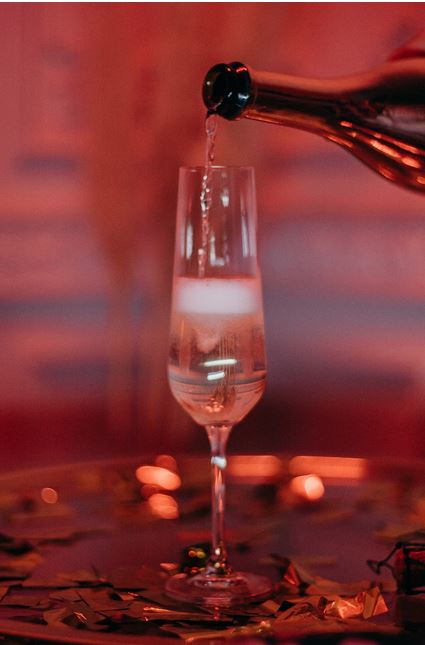
Myth busters
Researching champagne provides an opportunity to explore a rich history, a fascinating production process and, of course, to drink a glass of stars.
It is not surprising then that the library of books on the subject continues to grow year after year. On that point, I recently had the opportunity to spend an evening with Oxford wine historian Dr Graham Harding. He has just published a book looking at the history of champagne in England entitled Champagne in Britain, 1800-1914: How the British Transformed a French Luxury, which picked up the 2022 International Organisation of Vine and Wine award, an authoritative source on the industry.
The evening was an opportunity to fact check my knowledge with an expert and talk whilst enjoying of few bottles of impressive wines including a 21-year-old Dom Perignon. This brought up the first myth. Dom Perignon was not the inventor of the sparkling wine. He was a great blender of still wine and regarded the sparkle as a fault.
The first scientific research into sparkling wine was recorded by an Englishman, Sir Christopher Merrett, who presented a paper to the Royal Society in 1662 where he documented the effects of adding sugar to wine to create a sparkle. Another well-told myth about champagne is the occasion when it was drunk out of a slipper which was then cooked and eaten. Graham filled in the details explaining it was King Louis XV’s lover Mary or Marie-Louise O’Murphy and the year was 1752.
I once spent an afternoon tasting all the major non-vintage champagnes available in Australia. Why? Well, non-vintage (NV), whilst being the cheapest entry level wine, is also the hardest to make and maintain the style and quality through vintage variations. It is a blend of young wine with older reserve wine to achieve a consistent ‘house’ style which historically Pommery Champagne was the first to promote.
Some NVs are very light and lean driven by apple and citrus aromas, whilst others are more robust and heavy with plenty autolytic flavours such as yeast, bread dough or brioche. My favourites have these distinct flavours as well as elegance. My favourites are Louis Roederer, Taittinger and Bollinger. And for a little less, try Veuve Monsigny, Premier Cru from Aldi, it is reasonable stuff.

Clive Hartley is an award-winning wine writer, educator and consultant. Want to learn more
about wine? Try his Australian Wine Guide (7th ed) now available for purchase from Paradise
Books in Daylesford or via his website – www.australianwineguide.com.au
September 17th, 2023Wine notes
with Clive Hartley
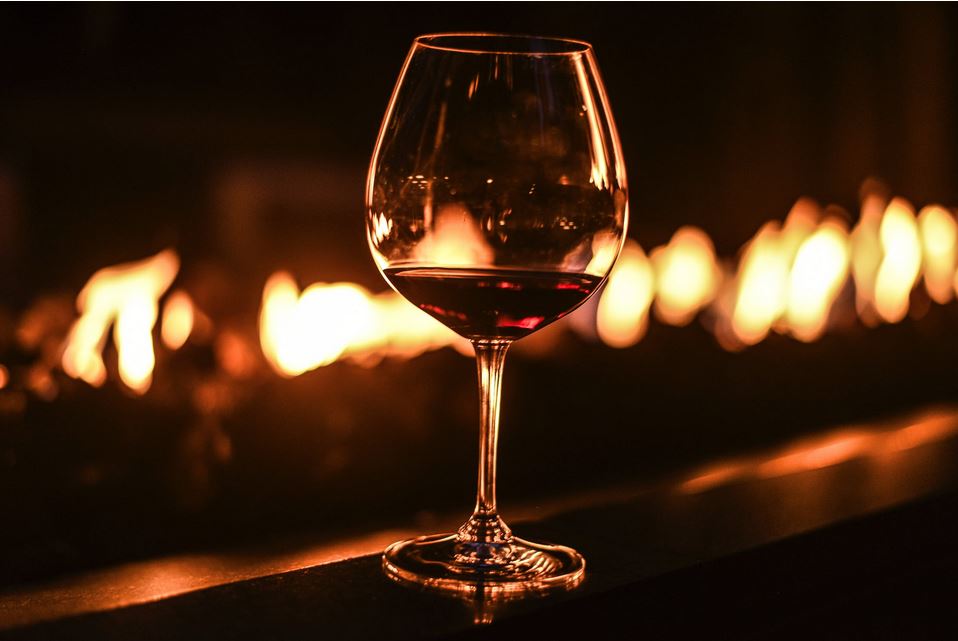
Fireside Wines
We have finally turned the corner on winter, but as any resident of this region knows, we are far from over the cold weather. So, there is still an opportunity to sit in front of an open fire and sip a good red. These fireside wines need to be bold and beautiful with plenty of guts and layers of flavour.
The Italians called these wines vino da meditazione. Meditation wine to sip whilst you contemplate monumental questions, such as the outcome of the impending referendum perhaps. Italy has a few contenders for these wines including the intense and high alcohol Amarone della Valpolicella from Veneto. This wine is made from semi-dried corvina rondinella and molinara grapes, and makes a more concentrated and intense wine. Ripasso is another technique in Valpolicella where a fresh wine is passed over the dried amarone skins which causes a refermentation. I always considered this a lighter style but was aghast recently to see a ripasso at 15% abv. We cannot use the term amarone or ripasso in Australia, but it doesn’t stop us using these techniques of drying grapes. One of the best in Australia is Freeman Secco Rondinella Corvina from the Hilltops region in NSW. Winemaker Brian Freeman uses a prune dehydrator to dry a proportion of grapes for 10 days. He then ages the wine in oak for two years.
Rich, powerful black cherry fruit-driven wines laced with new vanilla oak is the hallmark of a Barossa Valley red. The valley has some of the world’s oldest shiraz and grenache vines. Couple that with some sub-regional nuances and it is a complex and rewarding region to drink by the fireside. The Barossa Valley is split into three ‘Grounds’, Northern, Central and Southern which was based on their soil profile. The north, around the Ebenezer, Moppa and Kalimna wards gives you the most powerful shiraz. The Central Grounds includes the parishes of Bethany, Krondorf, Vine Vale, Light Pass, Gomersol and Marananga, has fruitcake, black-fruits aromas and is medium to full bodied. The Southern Grounds, in Lyndoch and Rowland Flat, is at a lower altitude and is slightly wetter and warmer than the other two regions. It produces more red than black fruits with soft ripe tannins.
Clive Hartley is an award-winning wine writer, educator and consultant. Want to learn more about wine? Try his Australian Wine Guide (7th ed) now available for purchase from Paradise Books in Daylesford or via his website – www.australianwineguide.com.au

September 4th, 2023Wine notes
with Clive Hartley
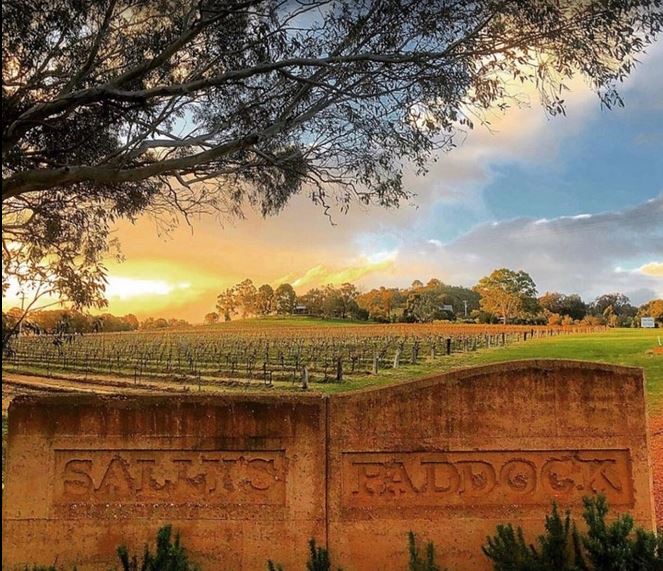
Bordeaux blends
On the world stage cabernet sauvignon easily outguns shiraz/syrah. It dominates the ‘left bank’ in Bordeaux, France and is famous in the Napa Valley in California. In Australia we have the Yarra Valley, Coonawarra and Margaret River as specialist regions for cabernet. Yet it runs a poor second to shiraz in Australia.
Cabernet sauvignon can make full-bodied wines with plenty of acid and tannins, as well as elegant black fruit flavours wrapped in a cloak of oak. However, when not fully ripe they can appear to be a tad austere and have an herbaceous leafy, green edge. Some people like that style, but others don’t.
Making a Bordeaux blend can overcome some of these shortcomings. A traditional blend found in France is comprised of cabernet sauvignon, merlot and cabernet franc, with the occasional splattering of petit verdot. This blend of grapes produces a harmonious match.
Cabernet sauvignon provides the structure for the blend and contributes body, tannin and acidity. Merlot adds a plum fruit softness on the middle palate that cabernet can lack as well and a tad more alcohol. Cabernet franc provides fresh red berry, floral and violet aromas. Petit verdot can be difficult to ripen in some climates but does OK in Australia. It adds fruit, tannin and a deep colour to the blend.
Do blends make better wines? In my opinion they do. In Australia we pick and choose what makes up the blend. It can be as simple as a cabernet merlot which is more commonly found in Margaret River. Try Woodlands or Cape Mentelle.
Yarra Valley have some fabulous Bordeaux blends. Yeringberg is one of the best in the Yarra and is a classic Bordeaux blend with the touch of malbec as the fifth grape. Yarra Yering and Mount Mary also produce some of Australia’s elite Bordeaux blends.
We also have a wealth of shiraz cabernet blends where the shiraz takes over the role of merlot to provide more fruit flavours. One of my favourites is Sally’s Paddock from Redbank Winery in the Pyrenees. The wine has cabernet franc, malbec and merlot added to the cabernet and shiraz. The vineyard and family just celebrated 50 years in production and deserves more attention.

Clive Hartley is an award-winning wine writer, educator and consultant. Want to learn more about wine? Try his Australian Wine Guide (7th ed) now available for purchase from Paradise Books in Daylesford or via his website – www.australianwineguide.com.au
August 20th, 2023Wine notes … with Clive Hartley
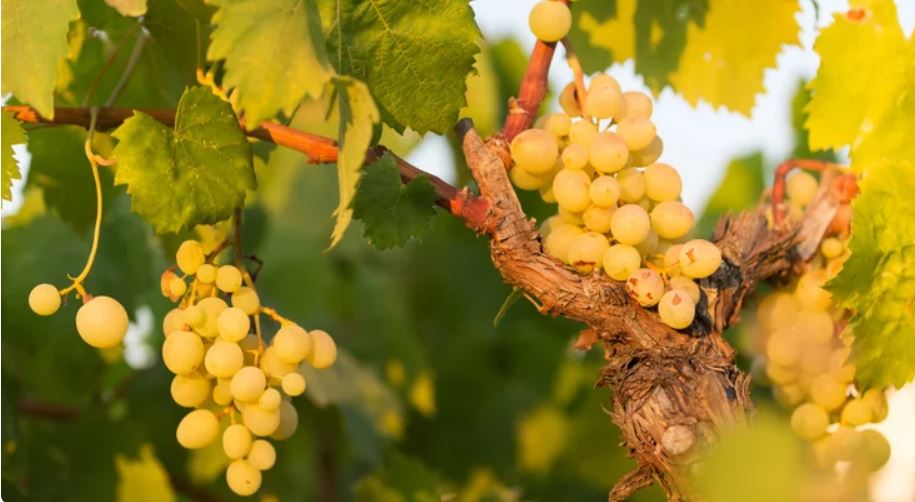
Campania comes to Australia
The fiano grape has truly established itself in Australia, with over 100 producers having planted it since Mark Lloyd from Coriole in the McLaren Vale planted this delicious white in 2001. It is well suited to Australia, being able to withstand drought conditions and can retain its natural acidity, even in the hot climates of Australia. It has open bunches so is resistant to rot problems and can take on organic viticulture.
What you get in the glass is a fleshy white wine with stone fruit and a hint of that almond meal character so often seen in Italian wines. The grape also can be matured in oak and Coriole produce an excellent reserve style called rubato that is barrel fermented. Closer to home Sutton Grange make a fiano that sees lees contact to produce a fleshy example. Billy Button from the Alpine Valley and Brown Brothers also were highly recommended in the last edition of my Australian Wine Guide.
Fiano originates in Campania in southern Italy, traditionally grown around the town of Avellino. Campania is home to a number of grape varieties that have the potential to do well in Australia. Greco is the stablemate to fiano and is grown in the Greco di Tufo region which lies slightly to the north of Avellino. Greco can be viognier-like in its intensity and aromas. Falanghina, which might have been the base of the white version of falernian, the most famous wine in the Roman Empire, is another locally grown white grape and has yet to break through in Australia. This is famous in the stunning Sannio area, and perhaps not as intense as fiano, but another good floral white.
Finally, we come to the most important red of the region, aglianico. Taurasi is the best expression of the grape variety coming again from the hills around Avellino. It is known as the Barolo of the South, having a robust, full bodied structure and high tannins. It has the ability to age well. This grape is growing in popularity in Australia and Sutton Grange make an excellent example that needs plenty of aeration and time in the glass to get the most out of the wine. But it is ideal for the chillier months ahead.

Clive Hartley is an award-winning wine writer, educator and consultant. Want to learn more about wine? Try his Australian Wine Guide (7th ed) now available for purchase from Paradise Books in Daylesford or via his website at www.australianwineguide.com.au
July 22nd, 2023Wine notes with Clive Hartley
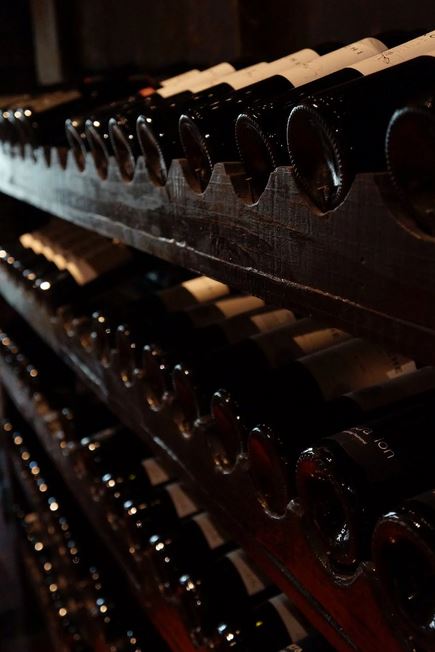
Challenging vintages
With the 2023 vintage now put to bed Oliver Rapson from Lyons Will Estate had time to summarise the year. “In a nutshell, the start of this year was exceedingly wet, delaying budburst substantially, which in turn had a knock-on effect across every stage of the vine development, including flowering, veraison and ultimately ripening.”
Early autumn is a critical time for final ripening, and in Daylesford it felt that we switched from summer to winter on the first day, I recall. So that put the vintage back as much as three weeks behind the normal dates.
Macedon Ranges is already one of the last regions to pick grapes in Australia, so this delayed harvest didn’t help ripening for some varieties. A late harvest also means that the temperatures in the winery are lower, and this can affect the fermenting must. Temperatures hovering around or below 15°C means the fermentation takes longer to finish. It also means the grapes will have lower sugar content and therefore have resulting low alcohol. It has been a run of three difficult vintages. 2022 was also a damp vintage as was 2021, being described as “a little bit on the cool side”. You have to go back to 2019 to find a normal warmer vintage.
This is the third year of the La Niña cycle where conditions in the Pacific Ocean bring wetter conditions to northern and south-eastern Australia, resulting in lower-than-normal temperatures. Whilst the full effects are felt in Queensland and NSW it does seem to reach as far south as the Highlands of Victoria. It is likely that the cycle has come to an end with some international agencies reporting that El Niño cycle has commenced, although our own, and highly respected, Bureau of Meteorology is being more cautious about declaring a change.
The drier conditions from El Niño bring their own threats and we only have to recall the terrible bush fires in 2020 that resulted in roughly half of NSW wine regions being affected by smoke taint and unable to make wine.

Clive Hartley is an award-winning wine writer, educator and consultant. His Australian Wine Guide (7th ed) is available for purchase from Paradise Books in Daylesford or via his website – www.australianwineguide.com.au You can contact Clive on info@australianwineguide.com.au
July 9th, 2023Wine notes with Clive Hartley
Pepper in Shiraz
A cool climate is not the growing conditions you imagine suiting a grape like shiraz. It is more at home in hot regions like the Barossa or Hunter Valley. Classic Australian wines are full bodied, rich, alcoholic with ripe jammy, dark black fruit aromas. However, when it is grown in chilly regions it develops more of a savoury medium bodied palate with distinctive pepper aromas. Ask winemaker Llew Knight from Granite Hills about pepper – he’s an expert.
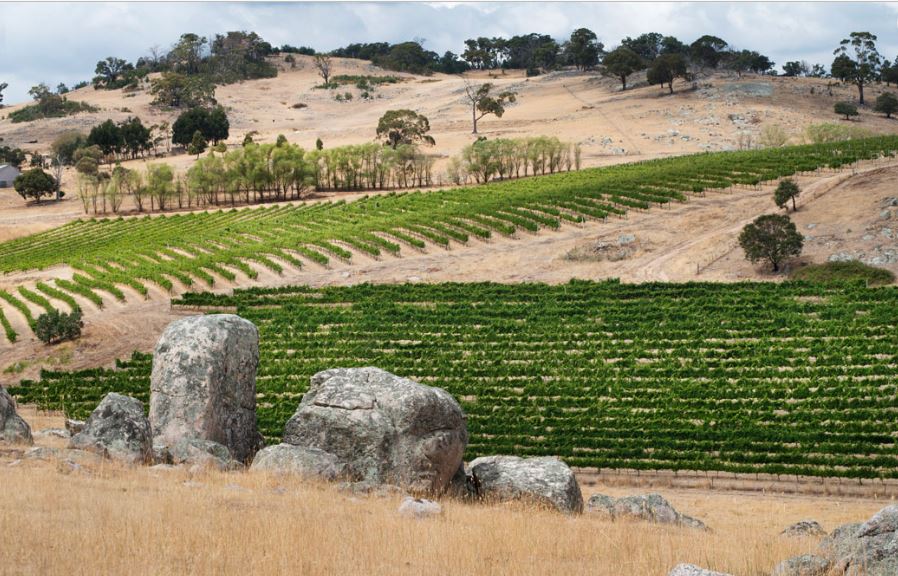
Llew has clocked up over 50 vintages and there are not many cooler places to grow shiraz in Australia than the Macedon Ranges. He has been studying the influence of rotundone, the compound responsible for the pepper aroma in shiraz. You might think that the smell of pepper comes from underripe grapes, but research has shown that rotundone increases as the grape ripens. Underripe grapes just smell of green stalks or green capsicum and winemakers try to avoid them at all costs.
Rotundone is a strong compound and extremely low concentrations (such as 16 ng/l) can be detected by the olfactory region of the brain, but only by some people. Research has found that roughly 20 per cent of the population are anosmic to the smell. It is also found in other varieties including gamay and grüner veltliner.
Wine companies are pretty liberal in using pepper in the descriptions of their wines. Probably this is because they want to associate their wine with the French ones from the northern Rhone Valley where you find the aroma occurring more often. They will often choose to call their wine syrah and not shiraz if they think it is more of a French style. The Grampians region is another area that extols the virtues of pepper in its reds and Mount Langi Ghiran has been at the centre of research with the Australian Wine Research Institute.
Coming back to Granite Hills. The vineyard is on granite-strewn pasture at 550 metres. The first vintage of shiraz was in 1978 and the current vintage for sale is the 2018. The wine is a classic with plenty of white pepper. You can also purchase a magnum of 2001 vintage to see how the wine ages.

Clive Hartley is an award-winning wine writer, educator and consultant. Want to learn more about wine? Try his Australian Wine Guide (7th ed) now available for purchase from Paradise Books in Daylesford or via his website – www.australianwineguide.com.au
June 24th, 2023Wine notes with Clive Hartley
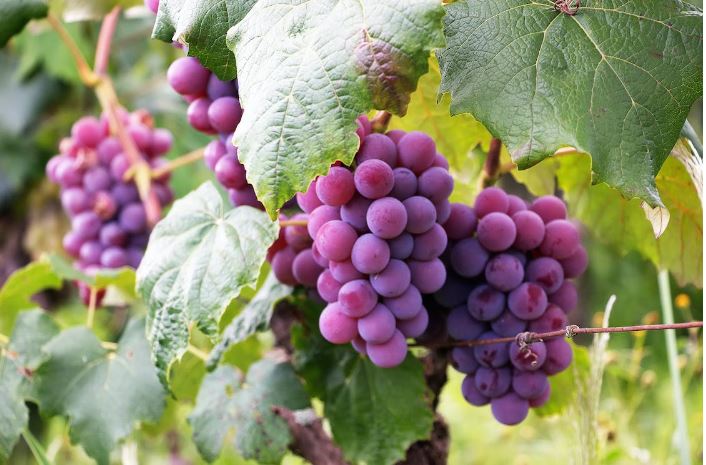
Gambero Rosso
The Gambero Rosso Top Italian Wines Roadshow rolled into Melbourne last month with over 50 producers represented from across Italy. It is a once-a-year opportunity to taste around 200 Italian wines.
The event is open to trade as well as wine lovers and is organised by Gambero Rosso, the organisation that publishes the definitive yearly guidebook on Italian wine. It is an eagerly awaited book to read who has achieved the top rating of ‘tre bicchieri’, the coveted 3-glass rating. It is a hectic few hours of tasting and a day I revisited some old familiar friends and found some new ones, in wine terms of course. Here are a few.
I’ve known Sella & Mosca from Sardinia for a long time. In Melbourne I tasted an aromatic 2022 Vermentino full of tropical fruits and herbs. Also recommended was their 2019 red Mustazzo Cannonau.
It comes from 50 year-old Grenache vines, grown at an altitude of 600 metres.
The wine had lovely sweet red fruits with a smooth and velvet palate. Bellavista is a sparkling wine from Franciacorta and the quality has always been high.
Nothing has changed with the current 2019 vintage Brut being elegant and with autolytic driven flavours that rivals a good Champagne. With well over 350 indigenous grapes in Italy there is always something new to discover and at the tasting it was the turn of Cesanese, a red grape from Lazio. The Casale del Giglio Matidia 2021 was a lovely bright red cherry juicy medium-bodied spiced red similar to a Gamay.
You don’t need to go offshore to taste some Italian inspired reds. Try Vinea Marson Sangiovese 2018 from Heathcote. It is a lovely, complexed wine with sweet fruit, herbs and cedar oak flavours. Or their 2017 Nebbiolo which displays classic herbs, flowers and tobacco aromas balanced by cherry and licorice flavours and was rated as ‘Outstanding’ in the Australian Wine Guide.

Clive Hartley is an award-winning wine writer, educator and consultant. His Australian Wine Guide (7th ed) is available for purchase from Paradise Books in Daylesford or via his website – www.australianwineguide.com.au
June 13th, 2023Wine notes: Innovation wrapped in tradition
with Clive Hartley

I consider Best’s Great Western as a national treasure and one of only a handful
of wineries that everyone should visit. It is an historical place for a number of
reasons.
The property’s ‘Concongella’ vineyard was planted in 1868 by founder Henry
Best and is a treasure trove of old vines. One patch cutely called the ‘Nursery Block’
has a staggering 39 grape varieties, some of the most extensive pre-phylloxera
plantings in Australia and the world.
A number of varieties remain unidentified, but amongst the vines are rare
grapes for the southern hemisphere such as fer, fermint and bourboulenc. The
property also contains extremely old dolcetto, incorrectly named as malbeck (sic).
The Thomson family bought the property from Henry Best’s sons in 1920 and they
remain the owners today.
Best’s 1.2 hectare planting of pinot meunier also dates from 1868. It is related,
and similar to, pinot noir, but a tad more resistant to cold weather, and ripens
earlier than its relative.
They are the oldest meunier vines in the world. The grape was called Miller’s
Burgundy, due to the bottom of the leaf looking like it has been dipped in flour.
Best’s Young Vine Pinot Meunier 2022 is outstanding. It has aromas of cooking
spices and red fruits such as cherries and redcurrants.
Palate has a similar red fruit focus but backed up with some fine powdery
tannins. It reminded me of a cross between pinot noir and gamay. The young vines
were planted in 1971, which are considered young compared to 1868 vines. Only
Best’s can think that way.
You might think that the company could rest on its historical laurels. But it
doesn’t. The company is looking for ways to innovate and keep up with market
trends.
Take for example their 2022 Foudre Ferment Riesling. It is a skin contact wild
yeast foudre fermented wine. Foudre is a large 2500 litre oak barrel. This type of
old, yet new treatment produces a more intense and interesting wine with depth of
flavour and texture.
Clive Hartley is an award-winning wine writer, educator and consultant. His
Australian Wine Guide (7th edition) is available for purchase from his website –
www.australianwineguide.com.au

May 28th, 2023Wine notes with Clive Hartley
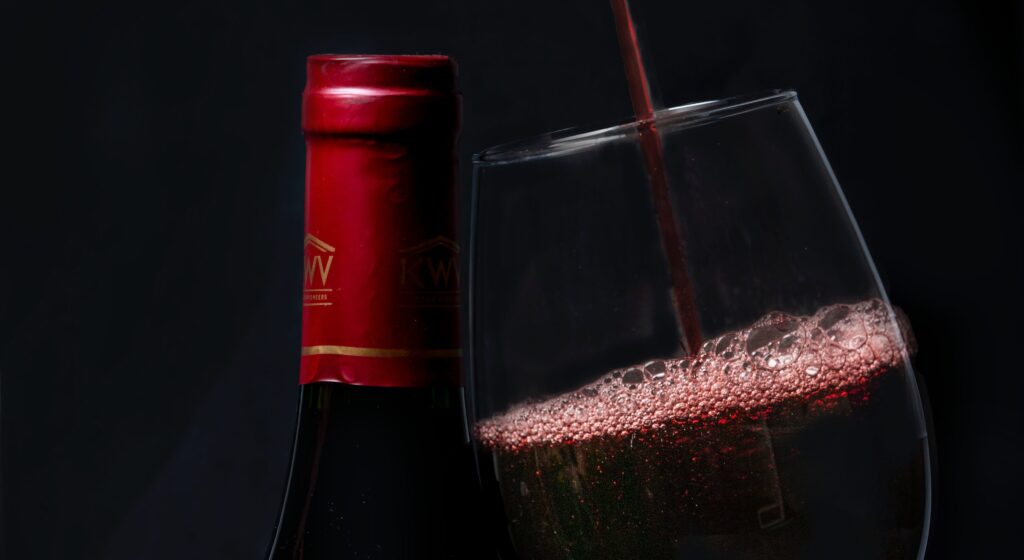
All points of the compass: Living in the Central Highlands of Victoria is like being in the centre of the universe. Well, in wine terms that is. Because at every point of the compass you can drive to a different wine region that offers you a diverse and interesting day out experience.
Travel an hour north and you can visit Bendigo. Here the climate is
considerably warmer and is ideal for producing cabernet sauvignon and shiraz.
Towards the north-east we have Heathcote. The rich, deep Cambrian soils
provide the foundation for delicious reds. These igneous soils were forced to the
surface by two fault lines that run through the region. The epicentre of the region
is just north of the township, and include classic producers such as Jasper Hill,
Munari, Sanguine Estate, Vinea Marson and Paul Osicka.
Staying more local, and lying directly east, we have the golden triangle of
vineyards around Lancefield, Kyneton and Mt Macedon. The cool climate dictates
that sparkling wines, pinot noir and chardonnay are the most commonly planted
varieties. Internationally renowned Bindi and Curly Flat make some of Australia’s
best wines. Hanging Rock ‘Macedon’ sparkling is superb. Other gems are Granite
Hills Riesling, Lyons Will Estate Gamay and Cobaw Ridge Lagrein.
In the south-east there is the tiny region of Sunbury and the renowned Craiglee
vineyard, a quiet achiever if ever there was one. Its medium-bodied, elegant shiraz
is listed on the Langton’s Classification of Australian Wine. Appointments only.
Driving directly south, and you pass through parts of the Ballarat region where
Eastern Peake reigns, before coming down to Geelong. You first hit the warmer
Moorabool Valley before ending up on the Bellarine Peninsula. The valley has
Bannockburn, Austin’s, Lethbridge and Clyde Park cellar doors. On the cooler
Peninsula there is Scotchmans Hill and Banks Road which both offer excellent
choices for lunch. Pinot noir features in both sub-regions. The peninsula wines are
lighter and more focused on red fruits, while the warmer Moorabool Valley has
more earthier, darker fruit-focused wines.
Turning west and north-west you enter the Pyrenees above Avoca, where more
full-bodied reds take over, namely cabernet sauvignon and shiraz. Top cellar doors
include: Redbank, Summerfield, Dalwhinnie and Taltarni. It is not much further to
reach Best’s Wines at Great Western. I might leave that one for another day.
Clive Hartley is an award-winning wine writer, educator and consultant. His Australian
Wine Guide (7th ed) is available for purchase – www.australianwineguide.com.au
April 29th, 2023Wine notes

Macedon Fizz
Macedon Ranges is the coldest wine-growing region on mainland Australia. It has an average altitude of 500m and a degree of continentality, which means the summer days are warm to hot, but the evenings are cool, this helps retain the natural acidity in the grapes. These are some of the factors that make it the perfect spot to grow grapes to make into sparkling wine. However, it does not receive the
recognition it deserves, and top billing often goes to Tasmanian wines.
Exactly 40 years ago, winemaker John Ellis thought the Macedon Ranges
would be ideal for making sparkling wines. He bought a property called Jim Jim
and planted a vineyard on a chilly south-facing slope at 650m that became the site
of Hanging Rock Winery. He planted D5V12 and MV6 clones of pinot noir, and
a Swiss clone called Mariafeldt as well as four clones of chardonnay sourced from Mumm Champagne House in France.
During the years we have seen the rise of sparkling wines in the region with
Hanging Rock leading the charge to use ‘Macedon’ to indicate a traditional method
sparkling wine from the area. Using the term Macedon is similar to the way the
French use Champagne. Our region is also home to Australia’s leading contract
sparkling wine maker – Kilchurn Wines. Some good sparkling wines from the
region include Mount Towrong Vivace NV, using nebbiolo instead of pinot noir,
and Wombat Forest Blanc de Noir NV. Other styles include a nice prosecco from
Red Hare and tasty Pet Nats from Attwoods, Hunter-Gatherer and Zig Zag Road.
Coming back to Hanging Rock. Fast forward to 2023 and we await the release
of Macedon NV Cuvée XIX, the 19th release of John’s vision. John’s son Robert
is now in charge of production and oversees the Macedon sparkling wine which
consists of a blend of vintages going back 10 years, some using a unique Solera
system for ageing. The wine also benefits from around three years on yeast lees.
The current Cuvée XVIII has rich brioche, biscuity and honey aromas with a firm,
creamy, nutty and zesty palate producing a long finish. A fine complex sparkling
wine that is in the style of Bollinger, but uniquely Australian.
- Clive Hartley has just published the 7th edition of his book The Australian Wine Guide
and is running a two-hour master class on the Macedon Ranges featuring 8 local wines on
April 29 and June 3. To purchase a book or tickets go to www.australianwineguide.com.au
April 17th, 2023Wine notes
with Clive Hartley

Gambling on gamay
Some of the first gamay vines were planted in Australia by Len Evans in 1976 at his aptly named home,
Loggerheads. I remember driving past the vines on the way to see him and questioning his sanity.
“You obviously don’t have vision,” was his tart reply.
However, I reckon the Hunter Valley is a tad warm for gamay and it is better suited to our cool climate region.
Lyons Will Estate definitely think so as they have just increased their plantings, and now boast of having the most comprehensive array of gamay clones in Australia. Owners Ollie Rapson and Renata Morello have joined forces with KC Vines and Rootstocks of Mildura and are trialling seven new clones.
They planted their first gamay vines in 2014 and started production in 2017
of this early ripening variety. In my books it is not much of a gamble. The grape is
renowned for producing beaujolais in France and it has been a sweet-heart varietal
in Australian sommelier circles for a while.
Styles vary from light and fruity to more serious pinot-like wines given oak
treatment. Grapes often undergo what is called a semi-carbonic maceration
whereby the bunches of grapes are placed in a vat and the weight crushes the grapes
at the bottom which then starts to ferment.
This triggers all sorts of reactions including an intracellular fermentation in the
unbroken grapes which makes a softer wine with cherry, kirsch and confectionery
aromas.
Lyons Will 2022 Gamay has just been released and it’s delicious. Fifty per cent
went through a semi-carbonic maceration with another four weeks on skins and
then it was matured in old French oak.
The resulting wine is full of aromas of cherries with some cinnamon and spice
notes. The light bodied palate has more sweet red fruits with soft tannins, the finish
is pleasantly persistent and long.
* Clive Hartley has just published the 7th edition of his book The Australian Wine Guide
and is running a two-hour master class on the Macedon Ranges featuring 8 local wines on
April 29 and June 3. To purchase a book or tickets go to www.australianwineguide.com.au
Wine notes with Clive Hartley will run regularly in the The Local


